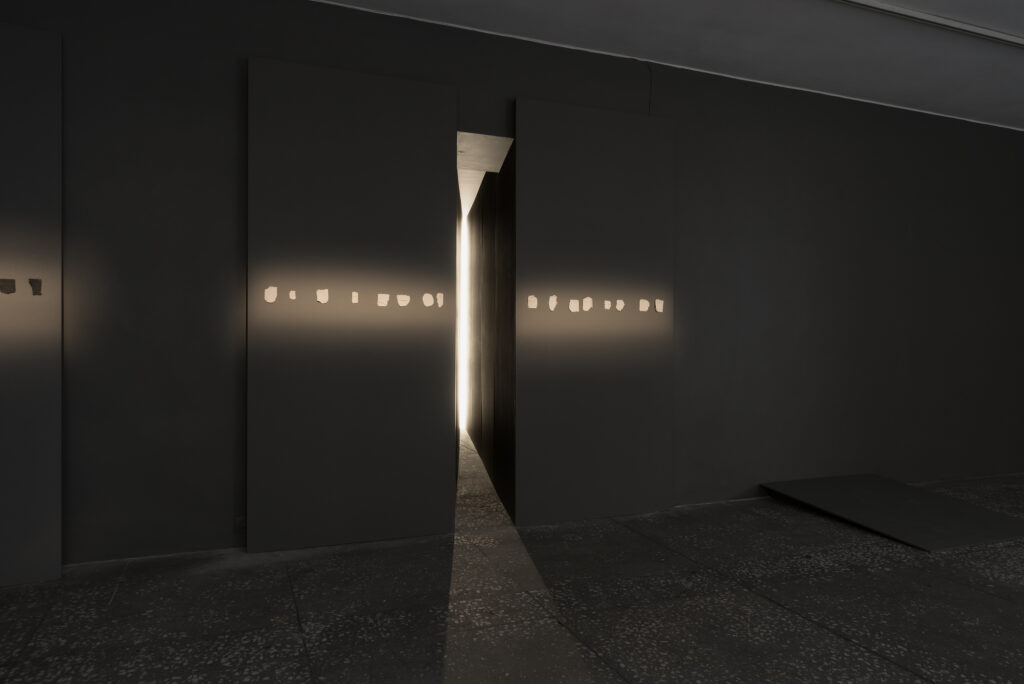Memory Palace

As mentioned before, there is a certain contradiction in displaying jewellery in an exhibition space, which stems from the fact that it does not belong to a wall or showcase, but is primarily intended to be worn. Therefore, each piece of jewellery can be thought of as a fragment that only becomes complete with its wearer. The jewellery pieces displayed at this exhibition are fragmentary by nature too, which suggests that they do not tell the whole story when seen as separate items.
It is common for us to see specially designed exhibition spaces for the presentation of an artist’s new collection. After all, under the best circumstances, the exhibition hall is indeed a special space designated for special pieces. In the case of artist jewellery, it assumes the role of the first wearer or serves as replacement for a body. So, what is the first wearer of Memory Palace like – the body that turns fragments into a whole? The City Gallery has become a grey and dimly lit space with individual protruding panels along the walls. It is not clear whether this memory palace is still being under construction or already falling apart. Is the hand placing the jewellery still active or has it left long ago? The sound design created by Helena Tulve amplifies this feeling, reminiscent of the echoing fragments of the music that once played in the house that is now empty.